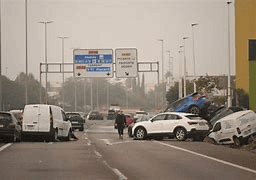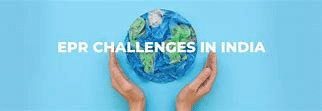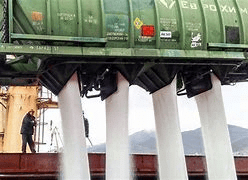UPSC Daily Current Affairs: 31st October 2024 | Current Affairs & Hindu Analysis: Daily, Weekly & Monthly PDF Download
GS1/History & Culture
REMEMBERING THE ‘IRON MAN OF INDIA’
Source: Indian Express

Why in news?
National Unity Day is commemorated in India on October 31st each year. This observance was established by the Government of India in 2014 to honor the birth anniversary of Sardar Vallabhbhai Patel.
Background:
- Sardar Vallabhbhai Patel, often referred to as Sardar Patel, was the inaugural Deputy Prime Minister and Home Minister of India.
- He was a prominent leader in the Indian National Congress and significantly contributed to India's fight for independence.
Key takeaways
Early Life and Role in the Freedom Movement
- Born on October 31, 1875, in Nadiad, Gujarat, Patel initially pursued a legal career.
- His involvement in the independence movement was inspired by Mahatma Gandhi.
- Patel gained recognition during the Bardoli Satyagraha in 1928, where he led farmers against exorbitant tax hikes, earning him the title “Sardar,” meaning leader.
Sardar Patel’s contribution to uniting India
- As independent India's first Home Minister, Patel was instrumental in the process of national unification.
- Upon independence, the British faced the challenge of the princely states' status under the Indian Independence Act of 1947.
- Many rulers of these states sought to declare independence, complicating the integration process amid the India-Pakistan partition.
- Through adept diplomacy, Patel managed to secure the integration of these states into the Indian Union, aligning them with the new constitutional framework.
- He employed various strategies: offering guidance, persuading rulers, and in some cases, using military force, particularly in Hyderabad.
- His political acumen and pragmatic approach were vital in consolidating over 500 princely states into a unified nation.
Sardar Patel’s contribution to administration
- In addition to unifying the country, Patel played a key role in establishing a robust administrative framework, known as the All India Services.
- His efforts in this area earned him the title of the “patron saint of India’s civil servants.”
Sardar Patel’s Contribution to Constitution
- As the chairman of the Advisory Committee on Fundamental Rights, Minorities, and Tribal and Excluded Areas, Patel significantly influenced the Constitution of India.
- His contributions focused on enshrining important provisions related to fundamental and minority rights.
GS3/Economy
UNIFIED PAYMENTS INTERFACE (UPI)
Source: The Print

Why in news?
The National Payments Corporation of India (NPCI) has approved Paytm to onboard new UPI users, provided that all procedural guidelines and circulars are followed. This decision is seen as a relief for Paytm, which faced difficulties due to the Reserve Bank of India's earlier restrictions on Paytm Payments Bank Limited (PPBL) regarding the onboarding of new UPI users on the Paytm app.
- Unified Payments Interface (UPI): It was developed by the National Payments Corporation of India (NPCI) in 2016 and built over Immediate Payment Service (IMPS) infrastructure. It powers multiple bank accounts into a single mobile application (of any participating bank), merging several banking features e.g., transfer of funds, etc. It is designed to enable peer-to-peer inter-bank transfers through a single two-click factor authentication process.
Features of Unified Payments Interface (UPI):
- Transfers can be simplified using the recipient’s UPI ID, whether it's a mobile number, QR code, or Virtual Payment Address, eliminating the need for account numbers.
- Initially, only the deposited amount was transacted through the UPI System; however, users can now access pre-sanctioned credit lines from banks via UPI.
- It removes the necessity to enter bank details or sensitive information every time a transaction is initiated.
- UPI enhances cross-operability, allowing 24/7 transactions effortlessly.
- Technologies like Immediate Payment Service (IMPS) and Aadhaar-Enabled Payment System (AEPS) ensure smooth transfers between accounts.
- Users can send and receive money offline through compatible devices supporting Near Field Communication (NFC) with UPI Lite X.
- UPI Tap and Pay enables payments through NFC-enabled QR codes at merchants with a single tap, negating the need to enter a PIN.
Concerns/Issues/Challenges associated with UPI:
- To expand UPI for a global user base, it must comply with various data protection and financial regulations, which present significant challenges.
- A parliamentary panel's report titled 'Digital Payment and Online Security Measures for Data Protection' indicated that foreign companies like PhonePe and Google Pay dominate the Indian fintech market. For instance, PhonePe held a market share of 46.91%, while Google Pay held 36.39% in transaction volume during October-November 2023, compared to BHIM UPI's mere 0.22%.
- UPI faces threats from cybercriminals who might exploit system vulnerabilities or utilize social engineering techniques to access sensitive information, resulting in financial losses.
- Managing currency conversion and exchange rates poses a significant challenge for UPI in cross-border transactions while facilitating payments and loading money into wallets.
- UPI's widespread adoption is hindered by a lack of familiarity with digital payments, leading to potential financial fraud.
GS3/Environment
What is DANA?
Source: NewsX

Why in News?
The recent extreme weather conditions in eastern Spain, particularly in Valencia, where the city experienced an entire year's worth of rain within just 8 hours, is attributed to a weather event known locally as Depresion Aislada en Niveles Altos (DANA), which translates to "cold drop" in English. This meteorological phenomenon is observed in the western Mediterranean region and is characterized by heavy rainfall and flooding.
- The term "DANA" was specifically introduced by Spanish meteorologists to describe this unique weather occurrence.
Features and Location:
- DANA manifests when cold air from the Polar Regions detaches from the polar jet stream and descends over the warmer waters of the Mediterranean Sea.
- This interaction between the cold air above and the warm, moist air at the surface creates atmospheric instability, which triggers the rapid development of cumulonimbus clouds and intense thunderstorms.
- Although DANA primarily affects Portugal, it can also influence countries like Italy and France, among others.
- This phenomenon typically occurs during autumn and spring when temperature fluctuations are more pronounced.
GS1/History & Culture
Who were Velu Nachiyar and Anjalai Ammal?
Source: Indian Express

Why in News?
Superstar Thalapathy Vijay recently launched his new political party, drawing inspiration from the legendary figures Rani Velu Nachiyar and Anjalai Ammal.
Contributions of Velu Nachiyar (1730-1796)
- Born in the Ramnad kingdom (now Tamil Nadu) to King Chellamuthu Sethupathy and Queen Sakandhimuthal.
- Received training in various martial arts, including horse riding, archery, kalaripayattu, and silambam.
- Was a polyglot, fluent in Tamil, Urdu, English, and French, with a strong understanding of military strategies.
- Married Muthu Vaduganatha Periyavudaya Thevar in 1746, later becoming the Queen of Sivagangai in 1772.
- After her husband's death in battle against the British East India Company, she fled with her daughter Vellachi and sought refuge with Hyder Ali of Mysore.
- Formed alliances with Gopala Naicker and the Marudu brothers to reclaim her kingdom.
- Successfully fought against the British and reclaimed her kingdom in 1780.
- Ruled for a decade before passing the throne to her daughter in 1790.
- Remembered as Tamil Nadu's 'Veeramangai' (Brave Lady) and celebrated for her resistance against British colonialism.
Significant Role of Anjalai Ammal (1890-1961)
- Born in Cuddalore, Tamil Nadu, into a weaver family.
- Inspired by Mahatma Gandhi, she joined the freedom struggle in 1908.
- Active in the Non-Cooperation Movement starting in 1921, marking her entry into politics.
- Played a key role in various movements including:
- Neil Statue Satyagraha against a statue of Colonel James Neil.
- Salt Satyagraha in 1930.
- Quit India Movement in 1942.
- Served as President of the All India Women’s Congress in Madras in 1931.
- Was arrested multiple times for her activism, notably giving birth while serving a six-month prison term.
- Despite being prevented from meeting Gandhi in 1934, she managed to do so in disguise, earning the title "South India’s Rani of Jhansi."
- First woman elected to the Madras legislature as a Congress representative.
- Continued her political engagement until her death, remembered as a pioneer for women's rights and freedom.
Previous Year Questions (PYQ)
[2016] Discuss the role of women in the freedom struggle, especially during the Gandhian phase.
[2015] Consider the following statements:
1. The first woman President of the Indian National Congress was Sarojini Naidu.
2. The first Muslim President of the Indian National Congress was Badruddin Tyabji.
Which of the statements given above is/are correct?
(a) 1 only
(b) 2 only
(c) Both 1 and 2
(d) Neither 1 nor 2
GS3/Environment
Misuse of EPR legislation worsening India’s plastic problem, shows CSE report
Source: The Diplomat

Why in news?
The Indian government's 2022 "Extended Producer Responsibility" guidelines represent a step forward, yet a recent report indicates that more robust actions are necessary to effectively enforce the "polluter pays" principle in the management of plastic waste, according to a report by the Centre for Science and Environment (CSE).
CSE Report Overview
- A CSE report is a publication from the Centre for Science and Environment, a well-known think tank in Delhi focused on environmental research and advocacy.
- The reports address critical environmental issues, providing insights based on data and suggesting policy improvements.
Understanding Extended Producer Responsibility (EPR)
- Extended Producer Responsibility (EPR) is a policy strategy that assigns producers considerable financial and sometimes operational responsibilities for managing the disposal or treatment of post-consumer products.
- The main aim of EPR is to hold manufacturers accountable for the entire lifecycle of their products, especially concerning their environmental effects, by ensuring their involvement in the collection, recycling, and disposal processes.
Extent of EPR Misuse in India's Plastic Recycling Sector
- Fake Certificates: An assessment by CSE, along with findings from the Central Pollution Control Board (CPCB), revealed the creation of over 700,000 fraudulent recycling certificates, indicating extensive deception among plastic recyclers.
- Certificate Inflation: Certain processors and recyclers reported volumes that vastly exceeded their official registered capacities. For instance, cement plants involved in end-of-life co-processing claimed to process 335.4 million tonnes annually while their actual capacity was only 11.4 million tonnes.
- Undermined Trust: These fraudulent practices have led to artificially low prices for certificates, damaging the credibility of the EPR system and complicating accurate tracking of plastic waste management.
Impact on Environmental Compliance and Plastic Waste Management
- Underreported Waste Generation: Producers of plastic packaging introduced 23.9 million tonnes in April 2022, leading to an estimated annual waste generation of around 8 million tonnes. However, the CPCB's estimate of 4.1 million tonnes indicates significant underreporting.
- Limited Stakeholder Participation: The lack of involvement from crucial players, such as urban local bodies and informal waste collectors, hampers traceability and places a disproportionate burden of waste management on local governments.
- Compromised Recycling Integrity: Due to the prevalence of low-cost fraudulent certificates, genuine recycling initiatives suffer from insufficient funding and poor regulation, threatening sustainable plastic waste management and the effective application of the EPR principle.
Measures for Enhancing Oversight and Accountability in the EPR Framework
- Inclusion of Informal Sector: Acknowledging and formalizing the roles of informal waste collectors and urban local bodies in the EPR framework could improve waste collection, segregation, and recycling rates, fostering a more transparent value chain.
- Combatting Fraud: Strengthening the auditing and certification processes to identify and eliminate fraudulent recyclers and processors, along with implementing stricter legal and financial penalties, would help deter misuse.
- Transparent Reporting: Improving the EPR portal to ensure precise data collection on plastic waste generation and disposal, while setting fair prices for recycling certificates to avoid undervaluation.
- Standardizing Products: Mandating uniform standards for plastic packaging materials and designs could enhance recyclability, reduce contamination, and make recycling efforts more effective.
- Enhanced Monitoring and Accountability: Bolstering the monitoring capabilities of the CPCB and State Pollution Control Boards (SPCBs) and ensuring consistent enforcement of guidelines at both state and central levels.
GS2/International Relations
UNITED NATIONS RELIEF AND WORKS AGENCY FOR PALESTINE REFUGEES IN THE NEAR EAST (UNRWA)
Source: Indian Express

Why in News?
Recently, Israel's parliament enacted two significant Bills aimed at prohibiting the United Nations Relief and Works Agency for Palestine Refugees in the Near East (UNRWA) from operating within Israel and the Palestinian territories. The Knesset has also classified UNRWA as a terrorist organization, effectively severing all governmental ties with the agency.
- Established in 1949, UNRWA was created to assist Palestinians displaced from their homes during the 1948 Arab-Israeli war. Israel contends that UNRWA's operations are no longer relevant and hinder the peace process. Conversely, critics argue that the ongoing conflict is perpetuated by Israel's failure to acknowledge the establishment of a Palestinian state meaningfully.
What is the UNRWA, and what role does it play?
- UNRWA operates under a mandate from the UN General Assembly to assist 'Palestine refugees.' This term was defined in 1952 as individuals whose usual residence was in Palestine between June 1, 1946, and May 15, 1948, who lost their homes and livelihoods due to the 1948 conflict.
- Palestine refugees include those who meet the above criteria and their descendants.
- Additionally, UNRWA is tasked with providing emergency humanitarian assistance to other individuals in need due to events following the 1967 hostilities, even if they are not registered as Palestine refugees.
- Only the UN General Assembly holds the authority to alter UNRWA's mandate or the definition of a Palestine refugee.
- UNRWA commenced its operations on May 1, 1950, and serves in Gaza, the Israeli-occupied West Bank, Lebanon, Syria, and Jordan, where many Palestinian refugees sought refuge post-expulsion.
- Currently, approximately 5.9 million Palestinian refugees, largely descendants of the original refugees, rely on UNRWA's services.
- The agency is primarily funded through voluntary contributions from donor countries, including the United States, Germany, and the European Union, along with a small subsidy from the UN for administrative costs.
- UNRWA employs around 30,000 Palestinians, with over 200 staff members having lost their lives in Israeli attacks in the past year.
So why has Israel acted against the UNRWA?
- Israel has accused some of UNRWA’s 13,000 employees in Gaza of involvement in the attacks on October 7, 2023, carried out by Hamas.
- Despite UNRWA terminating nine employees following an investigation, the agency asserts it does not intentionally support armed groups and has consistently shared its employee list with Israeli authorities.
What are the two Bills that Israel has passed?
- The first Bill prohibits UNRWA from maintaining any representative office, delivering services, or engaging in activities within Israel's sovereign territory.
- The second Bill eliminates all connections between government employees and UNRWA and revokes the legal immunities previously granted to the agency’s staff.
- Collectively, these Bills are expected to hinder UNRWA's operations in Gaza and the West Bank, as Israel regulates access to these territories, possibly forcing the agency to relocate its headquarters from East Jerusalem.
What can be the impact of these measures?
- In the wake of the conflict, nearly all of Gaza's 2 million residents depend on UNRWA for essential needs such as food, water, and hygiene supplies.
- Along with the Palestinian Red Crescent, UNRWA is responsible for the majority of UN aid distribution in the region.
- In the West Bank, UNRWA provides services to 19 refugee camps, operates over 90 schools, and offers various health services, including prenatal care.
GS2/Polity
Tackle the issue of adjournments, case pendency
Source: The Hindu

Why in News?
President Droupadi Murmu has emphasized the need to address delays in court proceedings. During the District Judiciary Conference, she highlighted that frequent adjournments create significant challenges for disadvantaged and rural populations seeking justice, as they often fear that their cases will take too long to resolve.
Primary Causes of Case Pendency and Frequent Adjournments in Indian Courts:
- Judge-Population Ratio: The current ratio is low in India, with just 21 judges for every million people as of 2024. This is notably below the Law Commission's recommendation of 50 judges per million.
- Vacant Judicial Positions: A substantial number of judicial vacancies exist, especially in High Courts, where about 30% of positions are unfilled. This understaffing increases the burden on the judges who are present.
- Additional Judicial Charges: Judges are often required to manage multiple courts or take on specialized roles, which can detract from their ability to concentrate on primary cases, leading to delays.
- Complex Case Load: Courts are overloaded with various case types, including civil, criminal, constitutional, and appeals. Many cases escalate to higher courts, creating significant backlogs.
- Lack of Judicial-Impact Assessment: New legislation frequently increases the number of cases without adequate evaluations of the effects on court infrastructure and resources, worsening delays.
- Delay in Witness Availability: Witnesses often do not arrive on time, causing court hearings to be postponed and impacting the timelines of trials.
How can technology be leveraged to reduce case pendency?
- Digitization of Case Records: Using electronic records can minimize administrative delays in filing, retrieving, and transferring cases between courts.
- AI-Powered Case Management Systems: Artificial Intelligence can help prioritize cases, monitor their progress, and foresee potential delays, enabling judges and clerks to manage schedules more effectively.
- E-Courts and Video Conferencing: Virtual hearings can speed up proceedings, particularly for remote cases or minor disputes, thus saving time on travel and scheduling.
- Automation of Routine Processes: Automating tasks such as case status updates and scheduling can cut down on clerical delays and enhance transparency for litigants.
- Data Analytics for Judicial Insights: Utilizing predictive analytics can aid in understanding case patterns, allowing policymakers to make informed decisions regarding judicial staffing and resources.
What reforms are necessary to improve judicial efficiency and reduce backlog? (Way forward)
- Filling Vacancies and Enhancing Judge Numbers: Prompt action is needed to fill judicial vacancies, along with increasing the number of sanctioned positions to meet the demands of the population and caseload growth.
- Implementing Judicial-Impact Assessments: Following the recommendations of the Justice M. Jagannadha Rao Committee for pre-legislative impact assessments will help ensure that new laws are accompanied by adequate resources.
- Expanding Mediation and Alternative Dispute Resolution (ADR): Increasing the number of mediation centers and promoting ADR methods can help resolve disputes outside of court, thereby alleviating the burden on the judiciary.
- Dedicated Special Courts: Creating specialized courts for specific categories, such as economic offenses or family disputes, can help lessen the load on regular courts.
- No Additional Charge Policy for Judges: Assigning judges to a single focus area can ensure they concentrate on their cases without being overburdened, enhancing efficiency and the quality of judgments.
- Periodic Judicial Training: Regular training for judges and court staff on case management and technological tools can equip them to better handle evolving challenges and reduce inefficiencies.
GS3/Economy
FERTILIZER IMPORTS
Source: The Hindu

Why in News?
With ongoing crises in Ukraine and Gaza, there is a growing concern among experts and policymakers regarding potential further increases in the prices of components used to manufacture petroleum-based chemical fertilizers. The Agriculture Minister of Uttar Pradesh has raised alarms about the state's fertilizer stock, which is only sufficient for the next 10 days. As sowing for the winter rabi crops commences, fertilizers like Diammonium Phosphate (DAP) and NPK (Nitrogen, Phosphorus, and Potassium) have become essential for crop growth.
What is the current import fertilizer import scenario?
- The Standing Committee of Parliament on Chemicals and Fertilizers has expressed concerns that domestic fertilizer production capacity does not meet the current demand.
- This shortfall is compensated for through imports, with approximately 20% of the domestic urea demand, 50-60% of DAP, and 100% of Muriate of Potassium (MOP) being sourced from abroad.
What is the situation in Ukraine and Gaza?
- The instability in fertilizer markets is largely attributed to ongoing conflicts in Ukraine and Gaza.
- These conflicts are likely to affect oil prices, which in turn will impact the pricing of fertilizer by-products.
- Data from Lok Sabha indicates that between 2018 and 2021, India relied on imports from several countries, including China, Russia, Saudi Arabia, UAE, Oman, Iran, and Egypt. The current crises could disrupt these supplies.
What can India do?
- India needs to boost its fertilizer production capabilities and adapt its agricultural practices to lessen reliance on imported fertilizers.
- Strategies such as utilizing nano urea, transitioning to natural farming methods, and increasing the output capacity of fertilizer manufacturing facilities have been proposed.
- The Standing Committee has highlighted the importance of policy initiatives that encourage investment in the public, cooperative, and private sectors involved in fertilizer production and distribution.
- Regarding the investment policy introduced in 2012 to enhance fertilizer production, the committee noted the establishment of six new urea plants, each with an annual capacity of 12.7 LMT, collectively increasing urea production capacity by 76.2 LMT per year.
|
44 videos|5271 docs|1113 tests
|
FAQs on UPSC Daily Current Affairs: 31st October 2024 - Current Affairs & Hindu Analysis: Daily, Weekly & Monthly
| 1. Who was Sardar Vallabhbhai Patel and why is he referred to as the 'Iron Man of India'? |  |
| 2. What were Sardar Patel's significant contributions to the unification of India? |  |
| 3. How did Sardar Patel contribute to the administration of India? |  |
| 4. In what way did Sardar Patel influence the drafting of the Indian Constitution? |  |
| 5. What is the Unified Payments Interface (UPI) and how does it relate to India's development? |  |
















